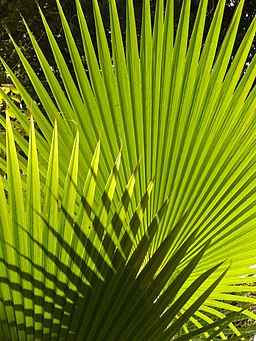| By Grez (Own work) [GFDL (http://www.gnu.org/copyleft/fdl.html) or CC-BY-SA-3.0-2.5-2.0-1.0 (http://creativecommons.org/licenses/by-sa/3.0)], via Wikimedia Commons |
We are all surrounded by some form of plant life. Whether you live on the edge of a desert or on a tropical island there are wonderfully photogenic plants within a few yards of your location. Most people take their everyday surroundings for granted to some extent, and forget to look closely at the beauty with which nature surrounds us.
Photographing plants does not need to involve rare or exotic species. When examined closely, even the most common plants are very beautiful. Train the eye to see the light, and what its changing direction and quality does to the simplest of leaves and flowers.
The best time to photograph flowers is early in the morning. At this time of day everything is fresh, plants may be covered in dew, and the air is often quite still. Wind can be a real problem when photographing plants because leaves and flowers dance around in an unpredictable manner.
In general it is best to avoid direct sunlight. Blooms look wonderful when illuminated by bright sunlight but contrast can be too high to handle. A better approach is to work under overcast conditions or even under a diffusing screen of some description. Colours are then more saturated.
However, working in direct sunlight can be interesting under some circumstances. Wonderful shadows are created by some leaves, for example palms of various types, and backlit foliage can be very attractive when the edges of leaves are rimmed with gold. Use a polarizing filter to reduce glare and help to saturate the colours.
Macro plant photography requires a a good close-up lens, such as the Nikon 105mm f/2.8 Micro, or the equivalent from one of the other manufacturers. It is important to be able to focus on objects within a few inches of the lens and to have a wide maximum aperture.
